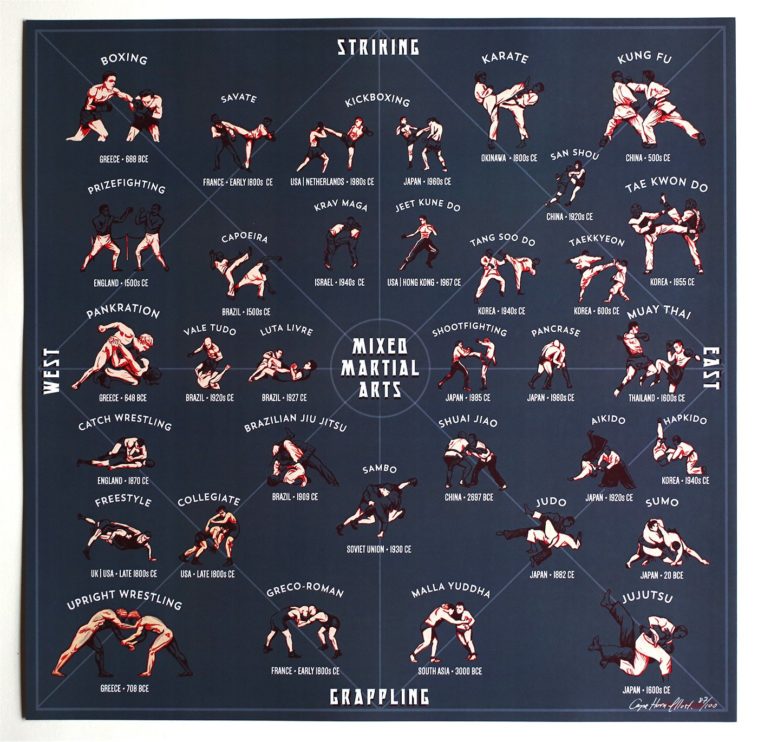Debunking The Various Fighting Style Designs: From Martial Arts To Taekwondo
Debunking The Various Fighting Style Designs: From Martial Arts To Taekwondo
Blog Article
Material Composed By-Carlson Russo
Are you tired of feeling overwhelmed by the vast globe of martial arts? With numerous styles to choose from, it can be easy to obtain shed in a sea of punches, kicks, and mysterious names. However anxiety not!
you can find out more will debunk the various fighting styles styles, taking you on a journey from the powerful strikes of Karate to the vibrant kicks of Taekwondo. Prepare to uncover the origins, techniques, and viewpoints behind these old art forms.
So, tighten your belt and prepare to start an informing exploration right into the exciting world of fighting styles.
Origins of Martial Arts Styles
The beginnings of martial arts styles can be mapped back to ancient worlds and their demand for protection and battle techniques. Throughout history, different societies developed their own one-of-a-kind techniques of battling, each with its own collection of techniques and approaches.
In China, for instance, martial arts designs such as Kung Fu and Tai Chi were created as a way of protection and boosting physical and psychological health.
In Japan, the samurai warriors created designs like Karate and Judo, concentrating on self-control, precision, and proficiency of the body.
Similarly, in Korea, Taekwondo emerged as a martial art highlighting high kicks, quick movements, and mental perseverance.
These very early people laid the structure for the diverse selection of fighting styles styles that exist today, each with its very own rich background and social significance.
Strategies and Educating Approaches
To grasp fighting styles designs, professionals should discover various techniques and training methods.
Strategies are the particular activities and activities utilized in combat, such as strikes, kicks, throws, and blocks. https://self-defense-woman-tools53837.activoblog.com/34481766/release-your-inner-warrior-with-stamina-training-for-martial-artists-discover-the-secret-strategies-to-enhance-your-power-speed-and-agility have their very own unique set of methods that practitioners have to understand with rigorous training.
Educating techniques vary relying on the style, yet they normally involve a mix of physical fitness, drills, sparring, and forms.
Physical conditioning is crucial to develop stamina, versatility, and endurance. Drills assist specialists refine their techniques and improve their rate and accuracy.
Sparring enables specialists to practice their strategies in a regulated, practical setting. Types, likewise referred to as kata, are prearranged sequences of motions that assist specialists establish muscle mass memory and focus.
Viewpoints and Concepts
Exploring the approaches and principles of fighting styles designs can give you with a much deeper understanding of your chosen self-control. Each fighting style has its very own special philosophy and collection of leading principles that form the method it's exercised.
For instance, Karate stresses discipline, regard, and self-discipline. It teaches professionals to focus their body and minds, enabling them to defend themselves while maintaining a sense of inner peace.
On the other hand, Taekwondo puts a solid emphasis on speed, dexterity, and flexibility. Its concepts are rooted in the tenets of politeness, honesty, perseverance, self-control, and indomitable spirit.
Final thought
Since you've explored the beginnings, methods, and viewpoints of different martial arts designs, you have a much deeper understanding of these ancient techniques.
Imagine https://self-defense-for-woman63727.tokka-blog.com/32708900/which-young-people-martial-arts-design-should-you-select-for-your-youngster-a-check-out-the-different-alternatives , practicing with unwavering resolution and focus, appearing boards with an effective strike.
Their trip showcases the dedication and strength required to master a martial art, advising us that with discipline and willpower, anything is feasible.
